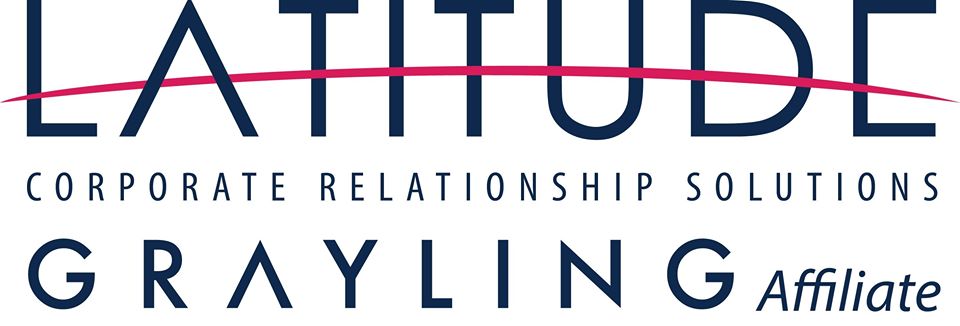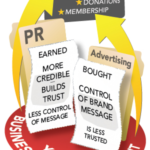Te
Unless you’ve been living under a rock for quite some time, you must’ve noticed that PR has gone well beyond simple press release writing. We live in the digital world where PR overlaps with other channels of communication, content marketing in particular.
But way too many PR agencies fail to notice the change, which is why only 19 percent of corporate communication companies actually contribute to the overall marketing strategy. You should be smarter than that and design a modern PR plan that correlates with your brand building activities.
Our job is to help you with that, so keep reading to learn seven ways to combine PR and marketing simply and successfully. Let’s take a look:
1. Determine your long-term objectives
Many PR managers make a serious mistakes and concentrate on short-term goals only. This is a big issue because journalists hate when companies just send it and forget it, expecting a one-time benefit for the brand. After all, how many product launches and corporate events can you organize?
A much better solution is to determine your long-term objectives and act strategically to maximize the effect of your content. This means building brand awareness and boosting professional authority with every little pitch you send to media outlets.
For example, editing services tend to create high-quality blog posts and articles because it’s the only way to impress the target audience. It gives them the authority to ask for more on special occasions and encourages journalists to publish their stories when it matters the most.
2. Identify important players in your niche
Now that you perfectly understand your PR goals, it is time to think about the most important media players in your niche. We advise you to make a full list of names, including:
- Industry magazines
- Journalists
- Key opinion leaders
- Websites
- Annual or one-time events
A good idea is to write down the names of all the relevant figures, along with their email addresses, social media profiles, subjects of interest, and so on.
What makes this step so important? Well, the point is not to waste time and effort trying to approach irrelevant audiences. This kind of list will help you to sharpen professional activities and try to win over media outlets that can present the business to verified leads exclusively.
3. Create content strategically
Content creation is a quintessence of modern marketing and the largest intersection point between marketing and PR. This is where you need to get creative and show what makes you a genuine industry thought leader because it’s one of the rare surefire ways to grab the attention of consumers and media outlets simultaneously.
How you do it depends on the nature and style of the business, but here are only a few suggestions that can apply to almost every niche:
- Keep the content educational and informative
- Don’t push it too hard and try to sell through marketing posts
- Make it relevant by discussing industry trends, stats, and findings
- Use a clear vocabulary and avoid complex sentences and paragraphs
4. Customize pitches
With everything you’ve done so far, you should earn respect and gain enough authority to send PR pitches freely. However, it still doesn’t mean that you can do that without customizing a message. The idea is to send a PR pitch that fits the needs and expectations of a given journalist or media outlet.
Jake Gardner, a content designer who wrote the bestessays review, says the first tip is to personalize messages: “Do it by using journalists’ first names and explaining how your pitch can contribute to the outlet’s editorial concept.”
Besides that, we recommend you to write a brief summary with all the key points. Journalists won’t read a pitch for more than a few seconds, so make sure to help them get the point almost instantly.
5. Build relationships with journalists and niche experts
You’ve probably figured out by now that modern PR and marketing are all about strengthening the bonds between businesses, customers, and journalists. After all, PR is a strategic communication process that builds mutually beneficial relationships between organizations and their publics.
It means you should turn the PR strategy into a long-term process and try to establish continuous communication with niche experts and journalists. Studies show that over 70 percent of publishers prefer collaboration over getting pitched a finished asset without prior contact.
Your task is to be patient and do the work with this long-term goal in mind. Don’t expect the journalists to be impressed with your pitches on all occasions, but rather try to provide them with relevant content regularly and let them decide what to publish.
6. Mind the content distribution
If you are lucky enough to get the pitch published, you should not stop working on it. On the contrary, this is the right time to take the extra step and give the content a brand new boost through all-encompassing distribution. Use every channel you have to spread the word about the new release:
- Publish it on your website
- Send an email to inform subscribers
- Share to social media to keep your fans up to date
- Invite employees to share the post on their social profiles
- Use advertising campaigns if the post is very important
7. Keep creating top-notch content
The last tip is rather simple—keep creating top-notch content in the long run. This is your ticket to public awareness, so do your best to publish quality posts week after week.
A bonus tip is to use tools such as Google Calendar for planning and scheduling. Take advantage of it to write down good content ideas and note daily writing tasks. At the same time, you should mark important dates like holidays, product releases, corporate events, and similar.
By doing so, you will never forget to prepare high-level content for each event and keep the media informed about it in a timely manner.
Conclusion
Modern PR has gone a long way from simple press release pitching. Today, PR agencies have to utilize a whole set of strategically designed activities in order to build relationships with media outlets and earn some promotion organically. In this post, we analyzed seven practical ways to build a cutting-edge PR plan that could work well with your marketing strategy. Have you already considered any of these tactics? What are you doing to combine marketing and PR?



